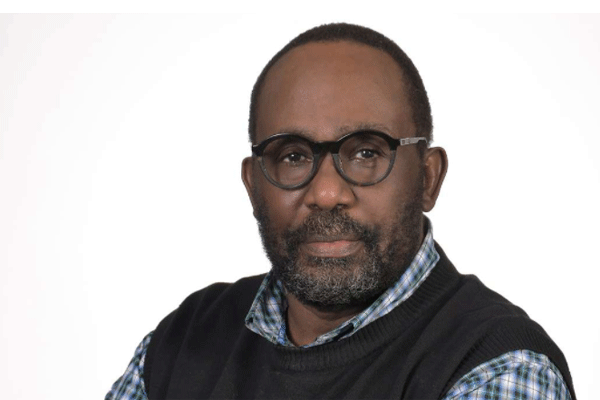Prime
2022 is done. Kenya is off to the 2027 races

Author: Charles Onyango Obbo. PHOTO/FILE
What you need to know:
What will follow in Kenya over the three to six months is the biggest and most intense season of political bargaining and deal-making in Africa
The Kenya Supreme Court on Monday upheld the election of Deputy President William Ruto in the August 9 polls, following a challenge by runner-up rival, former premier Raila Odinga, and several others.
There were eight petitions against the declaration of Ruto as the victor, the highest in litigious Kenya’s history. Overcoming them all must have made the triumph sweeter for president-elect Ruto. Ruto will be sworn in next Tuesday, September 13.
This Kenyan election, which riveted the attention of not just East Africa, but parts of the world, by its dramatic attempt to be transparent, is probably outside the direct experience of most Ugandans who are younger than 43 years. Going into the announcement, it was a toss-up. The Kenya Supreme Court is notoriously unpredictable; only the very reckless bet the house on how it will rule.
The sight of a battle between two civilian camps in court, with no armoured cars and soldiers standing outside – and in some cases, as we have seen in Africa on the side of one of the parties – was refreshing for the troubled project called African democracy.
A delighted and composed Ruto emerged from the deputy president’s residence in Karen, to address a large group assembled there, and made a statesmanlike victory speech, which was magnanimous towards his competitors, and outgoing President Uhuru Kenyatta, with whom he had a falling out, and who backed Raila instead.
The calm was deceptive because Kenya was already doing its unique politics. The campaign for the 2027 election started in earnest as soon as the Supreme Court called for Ruto. Indeed, part of Ruto’s success, as the Kenyan pundits put it, is that he was “campaigning for nine years”.
The signs of positioning were evident at the Karen event. On the front row were his partners in his Kenya Kwanza, including veteran politicians Senator Moses Wetangula, and Musalia Mudavadi, a former Kenya vice president and Raila ally in previous elections. Both of them shelved their presidential ambitions to back Ruto.
Whether by design or accident, they had to sit out in the sun for an hour before Ruto arrived, putting to rest any idea that they were nearly equal co-principals in Kenya Kwanza.
What will follow in Kenya over the three to six months is the biggest and most intense season of political bargaining and deal-making in Africa. It’s why it’s outside the direct experience of Ugandans younger than 43.
The last time Uganda witnessed anything remotely close was in 1979, when the big tent political grouping, the Uganda National Liberation Front (UNLF), took power after the ouster of Idi Amin.
The UNLF was formed at a meeting of Ugandan exiles in the Tanzanian town of Moshi in March 1979, as the Tanzanian army and the exiled groups marched on Kampala. It was the broadest political coalition in Ugandan history, with 28 groups represented. In the first year of UNLF, there was a balance of power inside the front and a lot of fierce haggling and jockeying over positions and policy.
Ruto will now have to deal with a similar scenario, as the Kenya Kwanza partners lay claim to ministerial and other positions that he will have to fill. There will be cries of betrayal, threats to abandon the coalition, and warnings about how he will be punished for his alleged treachery. Half of this will be political courtship and bargaining; the other half will be setting up stalls for 2027.
He will not just sit there, taking the blows. He will reach out to new allies, mostly in Raila and Kenyatta’s Azimio la Umoja (One Kenya) alliance, building new political assets around him and buttering them with jobs and goodies. If he doesn’t, he wouldn’t be able to govern and would be hamstrung by political paralysis, as often happened to Kenyatta.
In such a tightly fought election (Ruto won by 50.49 per cent of the vote against Raila’s 48.85 percent), overcoming the national divide will be a huge hurdle he will have to overcome. By about this time in 2025, the Kenya landscape will be unrecognisable compared to today. Both Kenya Kwanza and One Kenya Alliance will have mutated into the new vehicles for the 2027 campaigns. Some of Ruto’s allies today will be foes, and some opponents today will be his cheerleaders.
The Supreme Court will be vilified for its verdict, and by 2025 it will be saddled with a partisan image in the eyes of half the country and looking to refurbish its standing as the 2027 vote approaches.
There will be NO shots fired – well, at least going by the last 20 years. No political prisoners. The democratic space could have expanded in all the madness, and we shall have another freewheeling and unpredictable election in 2027 that will have Africa hooked again.
If you can afford it, buy a front-seat ticket for the show early.
Mr Onyango-Obbo is a journalist, writer and curator of the “Wall of Great Africans”. Twitter@cobbo3





